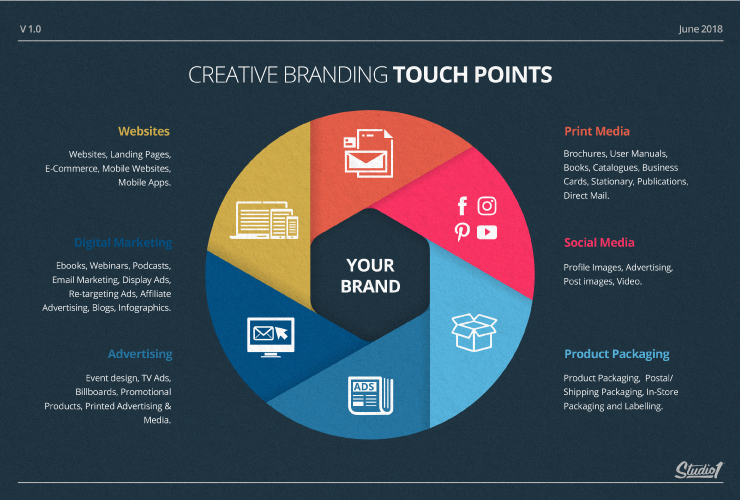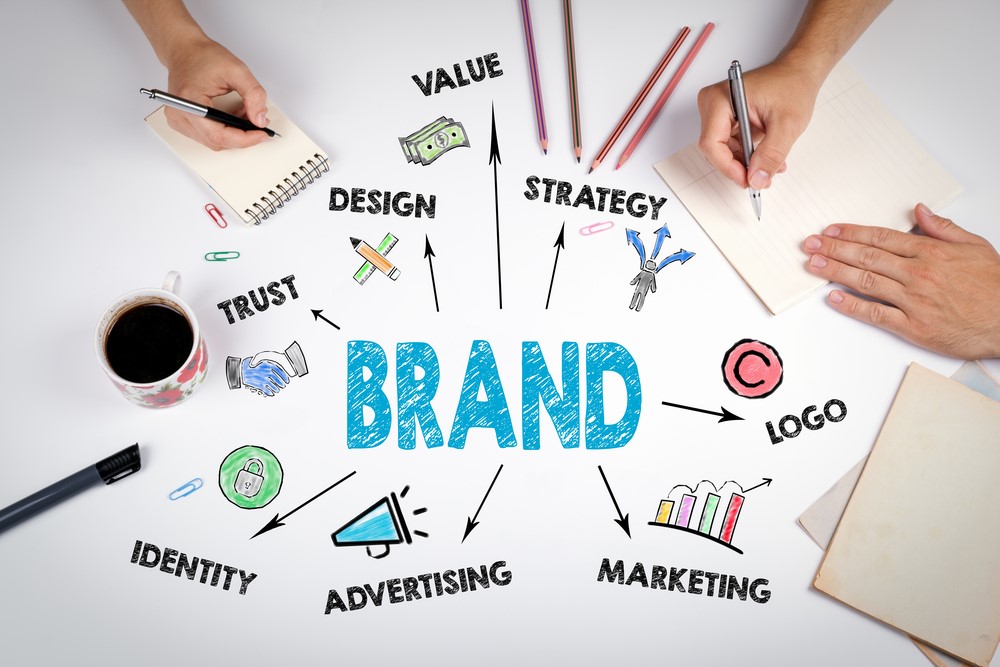How To Easily Create A Relevant Brand Identity & Brand Image

A strong brand identity doesn’t happen overnight. You can’t just pick a few colors and slap together a logo. You need to approach your design strategically. This requires deep thinking, a team with strong communication and design skills, and an intimate understanding of your brand.
With the right guidance, you can move through the process effectively and produce a truly great brand identity. Luckily, we can provide that guidance. Here, you’ll learn everything you need to know about designing a brand identity, along with our best tips and tools to do it. Is it your logo? Your color palette? Your infographic style? It’s all that—and more.
(Sometimes that even includes how it sounds, tastes, feels, and even smells.) Ultimately, a brand identity is a way to communicate with the world, differentiate yourself from your competition, and create a brand experience that encourages people to engage with you. Some brands elevate brand identity to an art (think Apple, LEGO, or Levi’s).
Unfortunately, some (okay, many) brands struggle because they don’t know who they are or don’t know how to communicate it effectively. (Not sure if your current brand identity works for you? Here are 9 signs it doesn’t.) Regardless of where you fall on that spectrum, one thing is sure. If you want to be a competitive and successful company, crafting a strong brand identity is mandatory.
A logo and a color palette alone do not make a brand identity. When designing your identity, you need to create a comprehensive visual language that can be applied to everything from your website to your packaging. Depending on your brand (and the type of content you plan to create), your needs may be more expansive, but a basic brand identity includes:
- Logo
- Colors
- Typography
- Design System
- Photography
- Illustration
- Iconography
- Data visualization
- Interactive elements
- Video and
- motionWeb design
Remember: Your brand identity should translate across mediums, so include everything you need to make sure it does.
A strong brand identity needs to work for everyone, both your internal team (e.g., brand ambassadors, content creators) and the people who will interact with it (e.g., customers). As you embark on the design process, make sure your brand identity is: Distinct: It stands out among competitors and catches people’s attention.
Memorable: It makes a visual impact.
The process can seem intimidating, but we’ve been through it many times with our creative partners (and through our own rebranding), so we know firsthand what mistakes to avoid, and how to make it easier on everyone. If your brand is in its early stages or preparing to rebrand and not sure where to start, follow these tips to move through the process seamlessly and build a stronger brand identity that sets you up for success.
How To Easily Create A Relevant Brand Identity & Brand Image
It is comprised of your: Brand Heart (purpose, vision, mission, values)Brand Messaging (brand voice, personality, tagline, value prop, brand messaging pillars)Brand Identity (logo, color, typography, etc.)Your brand identity is really a tool to help you communicate your brand visually, thus supporting your brand strategy. As such, before you dive into your brand identity, it’s important to have a fully fleshed-out strategy.
These help you understand what it is you’re trying to communicate so that you can design a brand identity that successfully does so. If you don’t have your brand strategy documented (or have never gone through the exercise), follow our stress-free guide to creating a brand strategy, and download our free Brand Strategy Toolkit below.
When you begin a branding project, you want to approach each phase from a philosophical and highly critical standpoint—inspect, poke, and prod until you get to the core of your brand. Whether you’re building your brand identity entirely from scratch or updating a stale identity, you need a full assessment of:
- The current state of your brand’s identity
- How that brand identity might be crafted or tweaked to align with your goals going forward
The goal is to understand how your brand is perceived, both internally and externally.

Whatever you create should accurately communicate who you are. However, one common misconception is that a brand identity is exclusively informed by what your brand wants to present. This isn’t entirely true. It’s also informed by what your brand’s customers want to engage with, or are accustomed to interacting with.
This doesn’t necessarily mean your brand’s customers will choose your logo color; it means that you will make more effective design choices once you understand their needs, wants, and values.
To understand who you’re trying to reach, try this easy exercise to create personas that represent your different target segments. These personas identify both demographic and psychographic information that gives you insight into who these people are and what drives them.
This information can also influence your design decisions. Building a brand identity is all about differentiation: making your brand visible, relevant, and unique. However, without a firm understanding of your competitive landscape, it’s easy to blend in. Thus, it’s crucial to understand not just who your competition is but how your brand compares, in perception and presentation.
Steps For A Successful Brand Building Process
As you move through the process, pay special attention to how your competitors present themselves in terms of common visual elements, trends, industry-specific visual themes, brand personalities, etc.
For example, we once did competitive research for a brand and found that all of their competitors used the exact same four colors.
The color instantly became a hallmark of their brand. (BTW, the company was so successful it sold to Amazon for a cool $1 billion in 2014.)
Once you’ve completed the previous steps, you have the information you need to start design. However, you shouldn’t jump right in. Start with a creative brief that details the pertinent info you need to keep your team on the same page—and ensure you create a visual identity that aligns to your brand.
Your brief should always inform, not overwhelm. By this time, you have a ton of information to help inform ideation, between your competitive analysis, brand audit, personas, and brief. At this stage, you want to take that text-based information and translate it into visual concepts. Luckily, the information you have is often steeped in emotional language about your brand’s personality, goals, and values.
(Or you can come in with 5-7 descriptors to start.) The focus is not to free-associate words into other words. The goal is to bring those words to life through visuals.
Think about what those words make you visualize. The associations may be abstract, but it is important to get everything out.
Think about what fast brings to mind.
Think about what concepts you can visualize. Pro tip: It’s usually the elements that elicit the strongest emotional response, trigger additional imagery, and help you build a visual playground to go nuts in.
from
https://www.fullscaleseo.com/how-to/how-to-create-a-brand-identity/
No comments:
Post a Comment